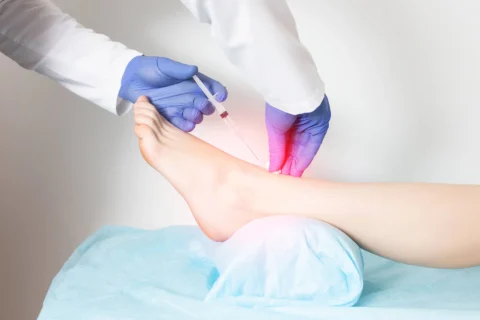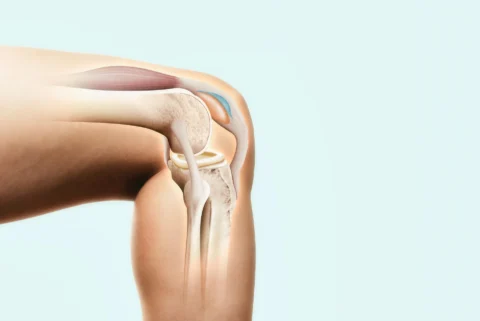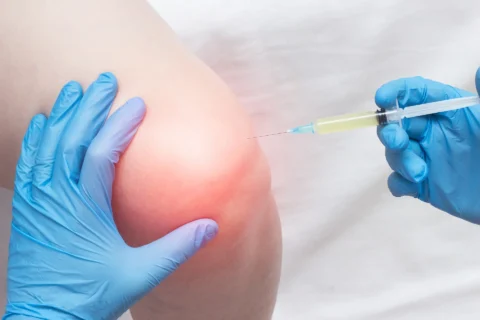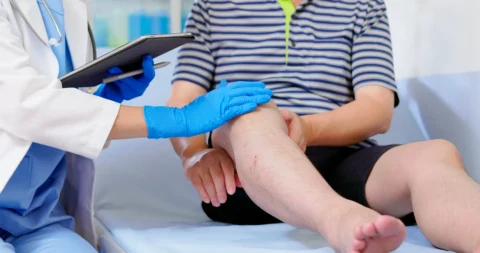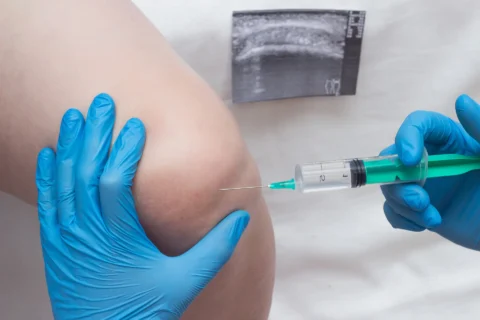The Latest Research on the Success Rates of Stem Cell Therapy for Hip Pain
The success rate of stem cell therapy for hips varies, showing promising results in some cases but not guaranteed outcomes overall. Research suggests that while it can be highly effective for certain hip conditions, individual responses may differ.
If hip pain is keeping you from living your life to the fullest, you may have considered hip replacement surgery. But this major operation comes with risks and a long recovery time.
That’s why more and more people are turning to regenerative medicine as an alternative. But does stem cell therapy for hips actually work?
Here’s what the latest research reveals about success rates for stem cell treatments on hip conditions.
What is Stem Cell Therapy and How Does it Work?
Stem cell therapy, also known as regenerative medicine, promotes the repair response of diseased, dysfunctional or injured tissue using stem cells or their derivatives. Rather than replacing tissues and organs through risky surgery, stem cell therapy leverages the body’s own healing powers.
Stem cells are like the body’s raw materials — they can become virtually any type of cell. When stem cells are injected into damaged tissue, they can help regenerate healthy cells and enable natural healing.
For hip problems, stem cells are often derived from the patient’s own bone marrow or fat cells. These mesenchymal stem cells can differentiate into bone, cartilage, and other tissues to revitalize the hip joint.
Stem cell therapy involves minimal intervention compared to surgery. The treatment simply requires injecting stem cells into the injured hip area, either through the joint or into the hip bones.
The cells then go to work reducing inflammation and encouraging the growth of new cartilage and bone tissue. Rather than introducing artificial implants, stem cell therapy helps patients regrow their own natural hip tissues.
What are its Benefits Over Surgery?
Stem cell therapy provides a number of advantages compared to surgery:
- Less Invasive – Only involves injections rather than major incisions through the skin and muscle.
- Lower Risk – Avoids risks like infection and blood clots associated with surgery.
- Quicker Recovery – Can get back on your feet within days rather than months.
- Less Expensive – Overall costs are lower compared to surgery and the hospital stay required.
- Natural Healing – Leverages your body’s own repair mechanisms rather than artificial implants.
What Hip Conditions Can Stem Cell Therapy Treat?
Research indicates stem cell therapy may be effective for various degenerative hip conditions, including:
| Hip Condition | Description | How Stem Cells Can Help |
| Hip Osteoarthritis | The most common type of hip arthritis causing stiffness and joint pain. | Stem cells can help regenerate cartilage to cushion the joints. |
| Labral Tears | Damage to the rings of fibrocartilage around the hip socket. | Stem cells promote healing of the torn labrum. |
| Avascular Necrosis | Loss of blood flow to the hip bone leading to tissue death. | Stem cells spur regrowth of bone and blood vessels. |
| Hip Bursitis | Inflammation of the fluid-filled sacs around the hip joint. | Stem cells can reduce inflammation and repair the damaged bursae. |
| Tendon/Ligament Injuries | Damage to the tendons or ligaments around the hip joint. | Stem cells enable soft tissue repairs around the hip joint. |
For these conditions, stem cell therapy may delay or eliminate the need for invasive surgeries like hip replacement by regenerating the body’s own tissues.
What’s the Latest Research on Stem Cell Therapy Success Rates?
When it comes to hip arthritis and injuries, how effective is stem cell therapy compared to established surgical treatments?
Here’s what the current research reveals about success rates:
In a 10 patient study, 100% had reduced hip pain and improved function 16-40 months after stem cell therapy for osteoarthritis.
Another study found stem cell injections decreased the need for hip replacement surgeries by almost 10%.
For avascular necrosis, stem cell therapy with core decompression prevented hip collapse in 91% of patients versus 61% with core decompression alone.
In general, studies show 50-80% success rates in relieving hip pain from various conditions when using stem cells.
Long-term studies over 25 years show stem cell therapy can lower hip replacement rates compared to other non-surgical treatments.
While more research is still needed, these initial findings demonstrate stem cells’ potential for repairing damaged hip tissue, reducing pain, and restoring mobility. Talk to your doctor to see if you may be a candidate for regenerative stem cell therapy.
Possible Risks and Complications
Stem cell therapy is considered very safe with few side effects. However, as with any medical treatment, some risks include:
- Infection at the injection site
- Allergic reaction
- Bleeding or bruising
- Increased hip inflammation for a short time
- No improvement or worsening of symptoms
Talk to your provider about risk factors before pursuing stem cell therapy for your hip.
What to Expect During Stem Cell Therapy
If you decide to pursue stem cell therapy, here’s a look at what you can expect during the procedure:
- Bone Marrow Concentration: Bone marrow is harvested from your hip bone and spun in a centrifuge to concentrate the mesenchymal stem cells. This takes about 1 hour.
- Fat Transfer: Liposuction is performed to remove abdominal fat tissue. This adipose tissue is processed to isolate potent stem cells.
- Injection: Using imaging guidance, the concentrated stem cells are injected into the hip joint or directly into injured bone/cartilage. Mild anesthesia is used to minimize any discomfort.
- Recovery: Most patients can go home the same day. Recovery typically involves rest, icing, and avoiding strenuous activities for 1-2 weeks to allow the stem cells to work. Physical therapy helps strengthen the joint afterward.
- Follow-up Appointments: Your provider will want to see you again periodically to assess your progress with the stem cell therapy and make any needed adjustments.
FAQs
How long does it take to see results from stem cell therapy?
Most patients report decreased pain and improved mobility within 2-3 months after treatment. Maximum benefits are typically seen around 6 months post-treatment.
Is stem cell therapy covered by insurance?
Unfortunately stem cell therapy is usually not covered by insurance and is considered an elective procedure. Costs range from $5,000-$10,000 out of pocket.
What is the recovery time after stem cell injections?
Recovery time is minimal. You can usually return to light activities within 1-2 days and normal activities within 1 week. Compare this to the 6-12 week recovery after hip surgery.
How long do results last from a single stem cell treatment?
Most patients see benefits lasting 1-2 years. Some may opt for a repeat injection after this time. More research is still needed on long-term durability.
Who is a good candidate for stem cell therapy?
Those with mild to moderate hip arthritis, injuries, or avascular necrosis who want to delay hip replacement may benefit. It’s less effective for advanced joint deterioration.
Are there any activities I should avoid after stem cell therapy?
Avoid high impact activities like running for 4-6 weeks to allow the stem cells time to promote healing. Low impact exercise can be gradually resumed.
A Game Changer for Hip Treatment
Stem cell therapy may revolutionize how we treat chronic hip conditions. Instead of invasive joint replacement, it uses the body’s own healing powers to regenerate bone, cartilage, and other tissue.
Current research is promising. Many patients gain reduced pain, improved mobility, and better quality of life. However, it’s not a cure-all. Advanced joint deterioration may be beyond repair. And benefits may only last 1-2 years before needing a repeat treatment.
Still, the minimal risks and recovery time make stem cell injections an attractive option for those wishing to avoid major surgery. As researchers refine the techniques, regenerative medicine could shift orthopedics away from artificial joints.
While more studies are underway, stem cell therapy looks to be an exciting new frontier in treating worn down hips. For the right candidates, it may provide that long sought-after alternative to hip replacement. Stem cells offer new hope for restoring mobility and an active lifestyle.






